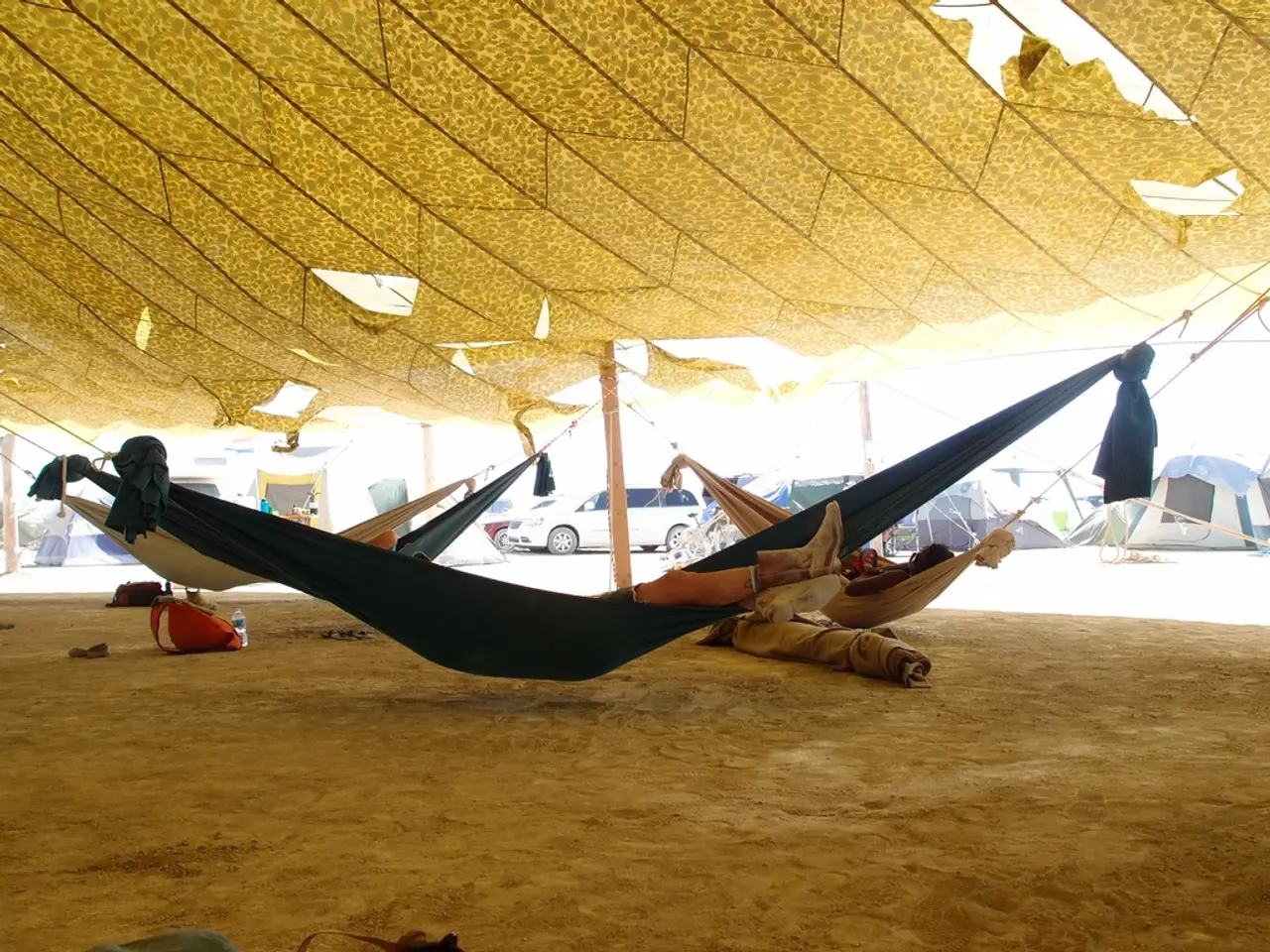Guiding Tips for Preventing Motorhome Battery Drain
Modern motorhomes have a higher electrical demand compared to their older counterparts, thanks to touchscreen dashes, multiple gauges, alarms, immobilizers, electronic sensors, and other advanced features. This increased demand means that the batteries need to be well-maintained to ensure they can power all the necessary systems.
One issue that arises is the quiescent drain, a small but regular current that flows through the vehicle even when everything is switched off. This drain needs to be under 100mA on a modern vehicle to prevent excessive drain.
To keep the vehicle battery charged, the electrical hook-up lead should be plugged into a mains source. However, if the battery does run flat, a booster pack can be a lifesaver. The Noco GBX75 booster pack, for instance, offers up to 2500A of current and is a popular choice among motorhome owners. While it is a bit bulky, many find it worth the investment for peace of mind.
Booster packs are easier to use than jump leads and can be used without needing another vehicle. Another option is a battery conditioner, but these can be a bit of a hassle to use, as they require lifting the bonnet and removing panels.
The earth connection on modern vehicles is also crucial. The earth lead should be in good condition, as corrosion can form in layers under battery leads and increase resistance, reducing the available voltage in the system. The earth strap itself can often break down with the passage of time, fray or degrade, and increase resistance of the cable and reduce the voltage flowing in the system.
It's essential to check the vehicle battery regularly to ensure it's in good condition. A multimeter can be used to check the battery voltage and to measure the quiescent current drain. To check the motorhome battery, the battery needs to be located, the multimeter set to 'voltage', the voltage measured, and the engine started to check alternator performance.
It's worth noting that most modern motorhomes will also charge the vehicle battery, but it's always a good idea to check this in the owner's manual or by measuring it yourself. If the vehicle battery isn't being charged, it's necessary to check if there is a setting to charge it on the leisure battery control panel or mains charging unit.
Human error is the most common cause of a flat motorhome battery. Leaving sidelights, interior lights, or aftermarket radios on can quickly drain the battery. To prevent this, it's a good idea to get into the habit of checking all lights and appliances before leaving the motorhome.
In winter, daylight hours are reduced, and solar panel outputs are harder to come by, making it more challenging for the battery to charge. Add to that the fact that many motorhomes are used irregularly over winter, and it's easy to see why the battery might not last long if not always connected to the mains.
To keep the campervan leisure batteries charged when the motorhome is not in use, a charging unit can be added to the vehicle. The Battery Master from Van Bitz or Sterling's Auxiliary Battery Charge/Maintainer are popular choices. These units automatically charge the vehicle battery when on a hook-up.
Lastly, it's a good idea to perform a drop test on the vehicle battery to check its health. Batteries can occasionally appear to be in perfect health according to their voltage but won't sustain a load. Regular maintenance and checks can help prevent this from happening.
In conclusion, maintaining the battery in a modern motorhome is crucial to ensure all systems run smoothly. Regular checks, the use of a booster pack or conditioner when necessary, and the installation of a charging unit can help keep the battery in top shape.
Read also:
- Peptide YY (PYY): Exploring its Role in Appetite Suppression, Intestinal Health, and Cognitive Links
- Toddler Health: Rotavirus Signs, Origins, and Potential Complications
- Digestive issues and heart discomfort: Root causes and associated health conditions
- House Infernos: Deadly Hazards Surpassing the Flames








